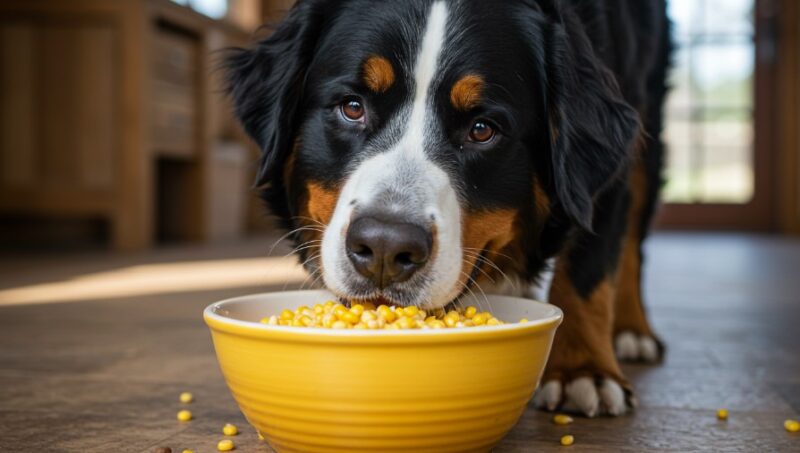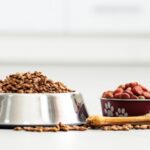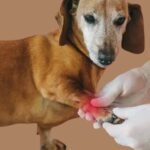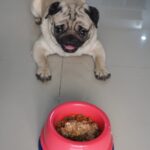Having a dog by your side is a wonderful experience. They’re our cuddle buddies, home security systems, and ultimate mood lifters all wrapped into one furry package.
As much as they love us, we want to be certain we’re taking the best possible care of them, too—particularly when it comes to mealtime. One topic that keeps popping up is corn.
People see corn in a lot of dog foods, but there’s still that nagging question: “Is corn really okay for my pup?” Let’s walk through it step by step.
Key Points
-
Cooked corn is safe and nutritious for most dogs.
-
Avoid corn cobs—they’re a choking and blockage risk.
-
Plain, unseasoned popcorn can be an occasional treat.
What Makes Corn Appealing for Dog Diets?
View this post on Instagram
Corn isn’t some arbitrary filler tossed into pet food without rhyme or reason. It has several key nutrients that can do your dog some good.
I’ve spent quite a bit of time looking into this for my own four-legged companion, and it may be surprising just how beneficial corn can be when prepared correctly.
Key Nutritional Points
- Carbohydrates: Corn is a solid source of easily digestible carbs. That means extra energy for zoomies in the backyard, playful romps through the house, and generally supporting your dog’s active (or not-so-active) lifestyle.
- Protein: It’s easy to think only meat has usable protein for dogs, but that’s not the entire story. Corn contributes a modest amount of protein, which can assist with muscle maintenance.
- Essential Fatty Acids: Linoleic acid is present in corn, and this is an omega-6 fatty acid that plays a big role in skin health. It helps keep your dog’s coat shiny and can promote stronger skin.
- Vitamins and Minerals: Corn brings B-complex vitamins to the table, along with minerals like magnesium and potassium. These support everything from healthy nerve function to strong muscles.
Can Dogs Process Corn Efficiently?
There’s an assumption floating around that dogs can’t handle corn. I get why some people worry about that—maybe they’ve seen kernels in their dog’s stool or heard conflicting claims.
The reality is, when corn is cooked using methods like extrusion (common in dog food manufacturing), it becomes much more digestible.
It’s kind of like the difference between a raw potato and a cooked one: most of us would have a tough time with a raw potato, but boil or bake it, and it’s a whole different story.
Of course, giving your dog raw corn kernels isn’t advisable. It’s best to ensure that any corn in their diet has been through a proper cooking process. That significantly reduces the chance of tummy troubles.
But What About Allergies?
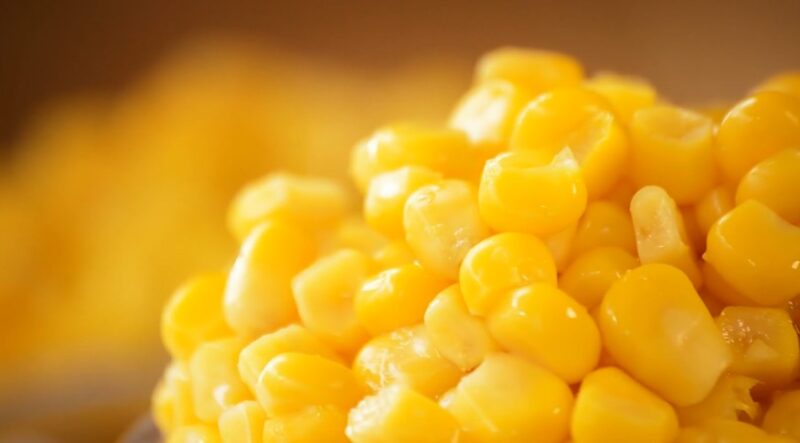
Allergies can be a headache for pet parents. We hate to see our dogs scratching, licking their paws, or suffering from ear infections because of something in their diet.
When allergies do happen, they’re usually linked to animal proteins like beef or chicken, not grains. Corn-related allergies do exist, but they’re rare.
If you see symptoms like persistent itchiness or digestive upset and suspect food might be the cause, it’s wise to speak with a vet.
Corn on the Cob
Not every form of corn is friend material. Corn on the cob can be a serious problem. I remember years ago, I made the mistake of giving my dog a few corn cob scraps because I figured, “What’s the harm?” Big mistake!
Dogs can break off pieces of the cob, and those fragments don’t break down well in the digestive tract. If a large piece wedges in the intestines, that can cause a blockage. And believe me, that’s a surefire ticket to an emergency vet visit, often involving surgery.
Why Corn Cobs Are Dangerous
- Choking Risk: Hard pieces can get stuck in the throat.
- Intestinal Blockages: Fragments of cob are tough and fibrous, potentially causing blockages that might require surgical removal.
- Limited Nutritional Value in the Cob: Even if it doesn’t get stuck, the cob itself has almost nothing good to offer your dog.
Popcorn
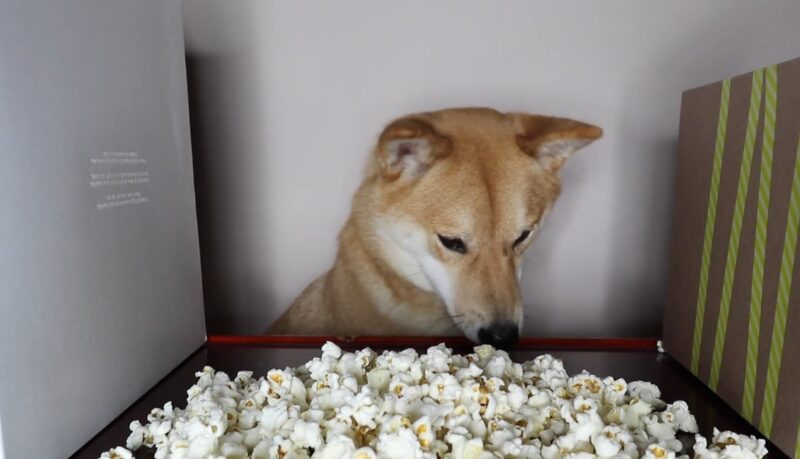
Most people love curling up on the couch with a bowl of popcorn during movie night. Turns out, your furry pal might appreciate a plain kernel or two as well. The key word here is “plain.”
That means no salt, butter, or crazy flavors that could upset your dog’s stomach or harm them in other ways. Why plain popcorn can be okay:
- Low-Cal Treat: If it’s air-popped and unseasoned, it’s fairly light on calories. That makes it a guilt-free snack in small doses.
- Dental Concerns: Unpopped or partially popped kernels can be a real hazard, though. They can lodge between teeth or pose a choking risk, so keep an eye out and pick out any hard kernels before sharing.
Different Forms of Corn and Their Role in Dog Food
It’s worth mentioning that there are multiple ways corn can appear in commercial dog food. Sometimes you’ll see it listed simply as “corn,” or it might show up as cornmeal, ground corn, or corn gluten meal.
These processed forms can make it easier for dogs to digest and tap into the nutrients. It’s also no secret that corn is generally less expensive than certain other ingredients.
That factor often contributes to its popularity in many kibble formulas. But cost isn’t the only reason it’s used.
It aids in enhancing the texture and can help ensure a more balanced overall nutritional profile—assuming the manufacturer knows what they’re doing and uses high-quality ingredients.
Addressing Common Misconceptions
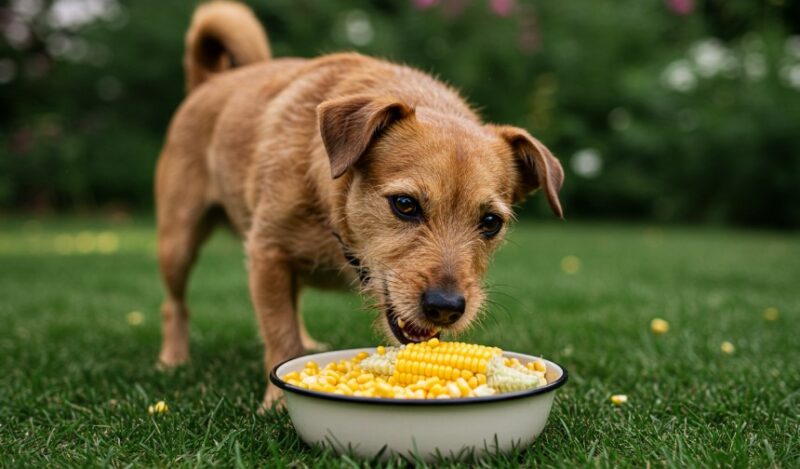
You’ve probably run across the idea that grains are all bad for dogs, or even beans. There’s this notion that grain-free is automatically the best way to feed them.
In many cases, though, a grain-free formula doesn’t offer a significant advantage unless your dog has a specific intolerance.
Since corn allergies are so unusual, going grain-free just to avoid corn may not deliver any real benefit. Dogs can digest cooked grains quite well, and they can gain valuable nutrients from them.
Comparing Different Corn Options
Here’s a quick rundown of various corn forms and how they might fit (or not fit) into a dog’s diet. I’ve put together a short table to make it easy:
| Type of Corn | How It’s Used | Potential Risks |
| Corn on the Cob | Eaten directly or tossed away after human meals | Risk of choking and intestinal blockages |
| Cooked Corn | Often included in homemade dog meals or commercially prepared | Minimal risk, as cooking softens kernels and makes them digestible |
| Cornmeal | Used in certain dog treats or kibble as a binder/ingredient | Usually safe unless your dog has a grain sensitivity |
| Popcorn (Plain) | Occasional treat (air-popped, no butter, salt, or flavors) | Choking hazard from unpopped kernels; watch out for seasoning |
| Corn Gluten Meal | A by-product in commercial dog food, provides protein content | Unlikely to cause issues unless rare allergy is present |
Tips for Feeding Corn to Your Dog Safely

- Moderation Is Key: A bit of cooked corn here and there can be a fun treat. Don’t make it a massive part of your dog’s daily meal, though.
- Cook It Thoroughly: Raw kernels aren’t as digestible, so always go for properly prepared corn to make it gentler on the stomach.
- Skip the Cob: That’s non-negotiable. Cobs can be dangerous.
- Avoid Seasonings: Butter, salt, and spices might wreak havoc on your dog’s digestive system and add unnecessary calories or sodium.
- Introduce Gradually: Anytime you add something new to the diet, go slow and observe how your dog reacts. Some may get gas or loose stools if they’re not used to it, so it’s helpful to watch for any changes.
Could Your Dog Do Without Corn?
Certainly. Some owners prefer to avoid it, and that’s okay, too. But it’s also fine to include corn in a balanced diet.
If you’re uncertain about a grain-inclusive or grain-free plan, a vet or a certified pet nutritionist can shed light on what’s best for your dog.
Let’s be honest: every dog has a unique constitution. Some are more sensitive, and some can chow down on just about anything with zero issues.
What About Homemade Corn Recipes?
We’ve talked a lot about corn in kibble, but maybe you like cooking at home for your dog once in a while. Cornmeal can feature in certain homemade biscuit recipes. Cooked sweet corn kernels can be tossed into a dog-friendly stew or mash. If you go this route:
- Use Fresh or Frozen Corn: Canned varieties may contain added sodium.
- Cook Thoroughly: Boiling, steaming, or baking can make kernels easier to digest.
- No Extra Seasoning: Plain is the name of the game. Garlic, onion, or excessive salt can harm your dog’s health.
- Seek Professional Input: Consistently cooking from scratch can get tricky in terms of balancing all essential nutrients. Someone with a background in pet nutrition can make sure you’re checking all the right boxes.
Wrapping It Up
Dogs can safely eat corn as part of a balanced regimen. The main hazards show up when the corn is still on the cob or loaded with seasonings.
In its plain, cooked form, corn can supply carbs for energy, protein for muscles, and fatty acids for a healthy coat. It’s also used in commercial dog food for good reason.
Of course, you want what’s best for your sidekick. That means keeping a watchful eye anytime a new food comes into the picture. If something seems off—say your dog looks uncomfortable or develops an unexpected rash—calling your vet is the responsible move.
But in general, you can rest easy knowing that a bit of corn is typically just fine.

